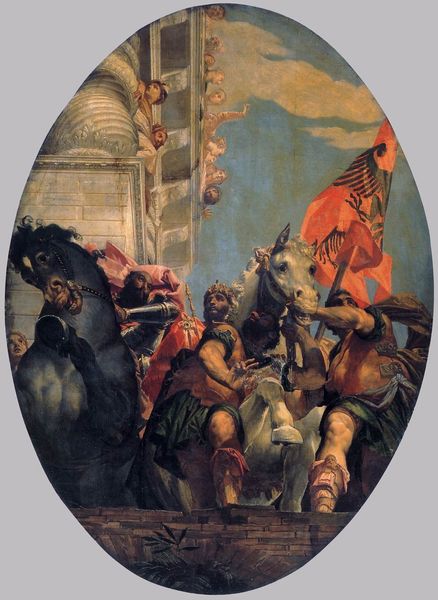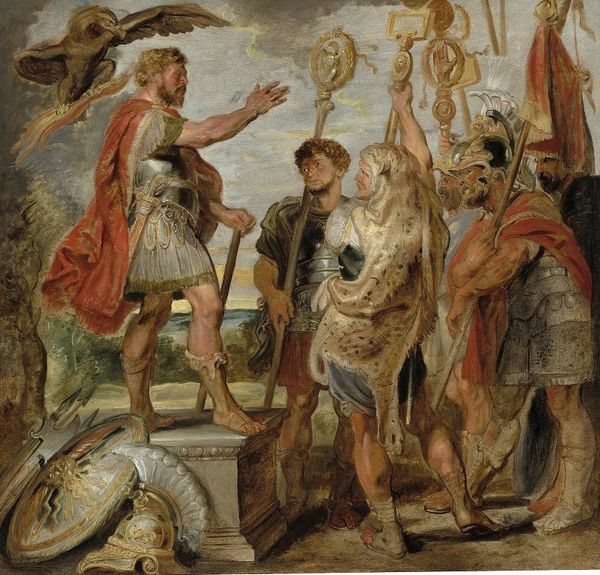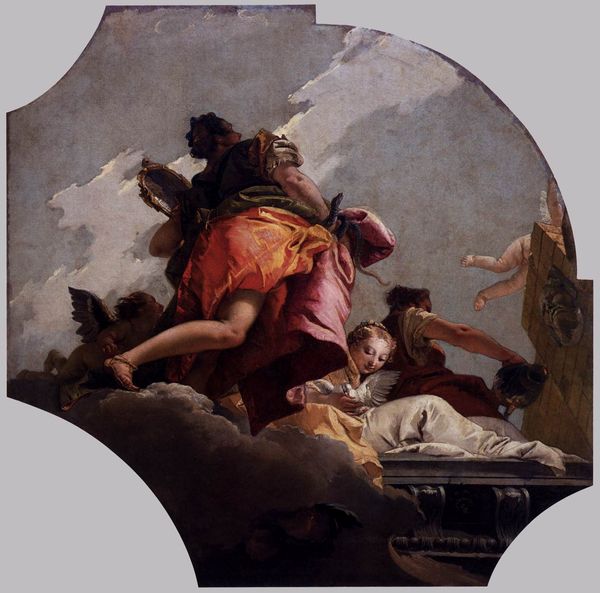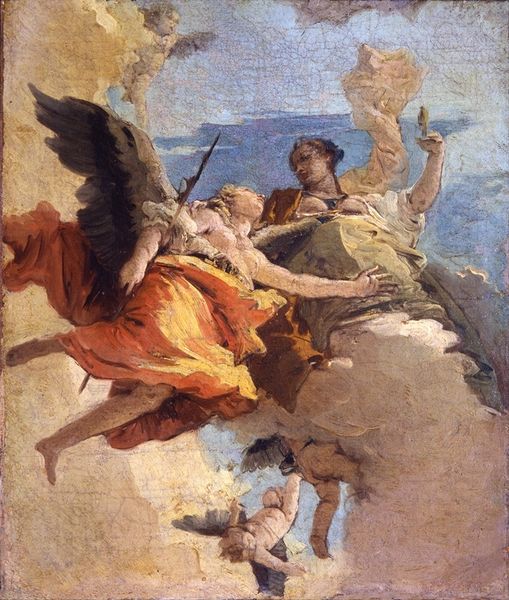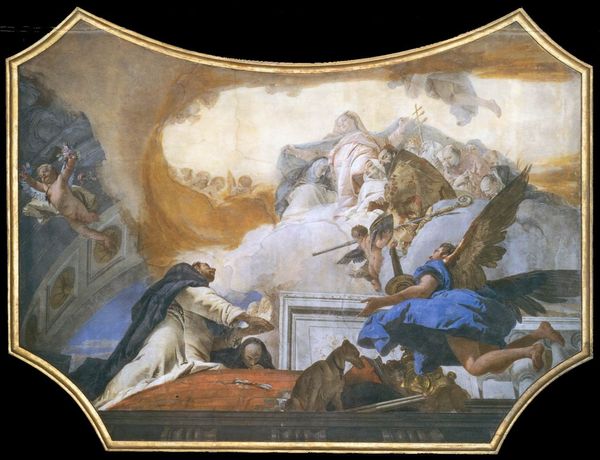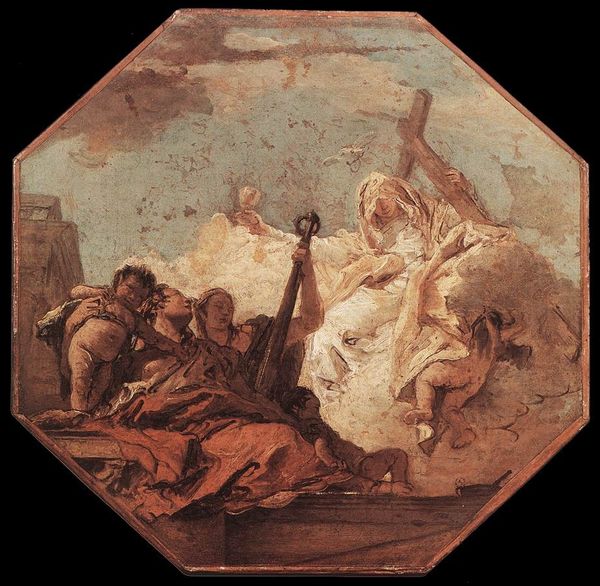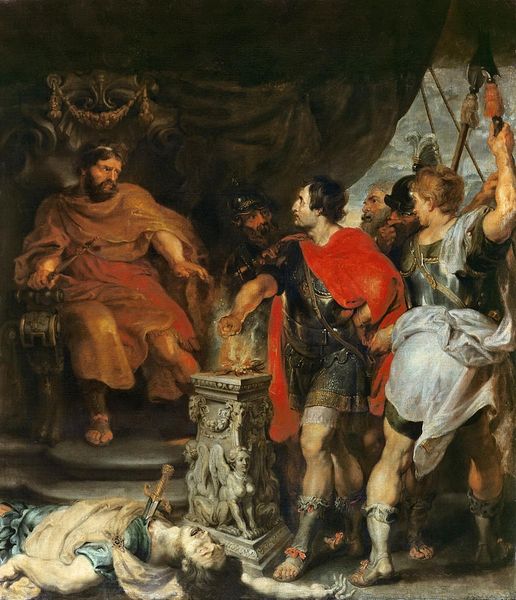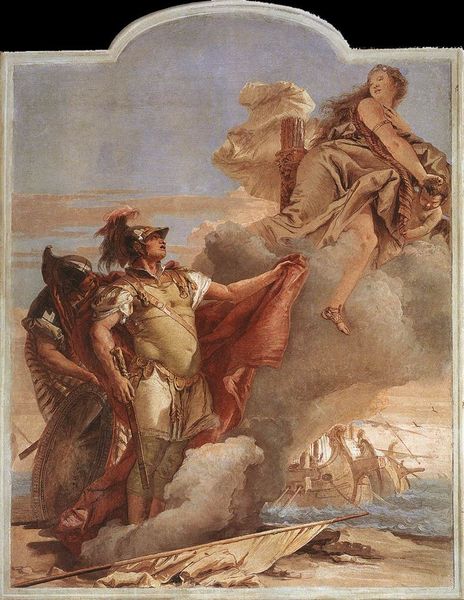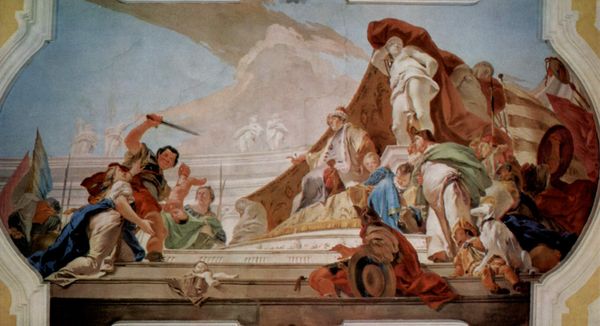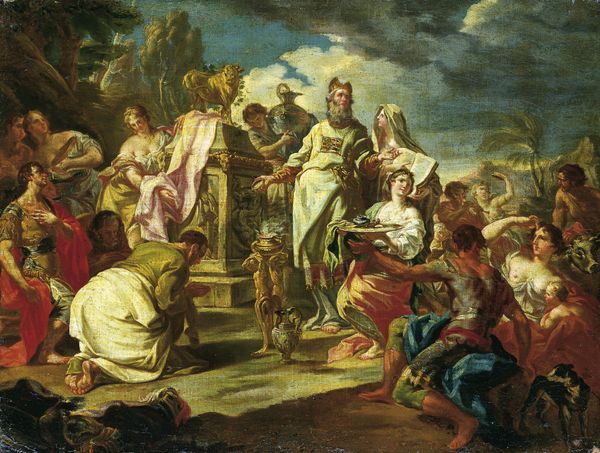
Detail of Dido, from Aeneid Presents Cupid, Disguised as Ascanius, to Dido 1757
0:00
0:00
painting, oil-paint
#
allegory
#
baroque
#
painting
#
oil-paint
#
figuration
#
oil painting
#
roman-mythology
#
cupid
#
mythology
#
history-painting
Copyright: Public domain
Editor: This detail comes from Giovanni Battista Tiepolo's oil painting, "Detail of Dido, from Aeneid Presents Cupid, Disguised as Ascanius, to Dido," created around 1757. It feels very theatrical to me, almost like a stage play. What do you make of this kind of presentation? Curator: Tiepolo's work is fascinating precisely because it engages with theater, spectacle, and power. Looking at it from a historical viewpoint, these history paintings were often commissioned to project authority and to construct narratives of legitimacy. Do you see how Dido is literally elevated on a dais? Editor: Yes, she’s positioned like a queen receiving tribute! So the ‘stage’ becomes a site for the performance of power, not just entertainment. Curator: Exactly! And the Cupid disguised as Ascanius is key here. Consider how the Aeneid was used to legitimize Roman power, and by extension, later empires. Tiepolo's painting isn’t just illustrating a story; it’s participating in that construction. How do you think this particular scene, where deception is central, plays into that dynamic? Editor: It makes me question the truth being presented. It seems to suggest power relies on illusion and manipulation, which is unsettling. Curator: Indeed. And thinking about museums and galleries displaying such pieces, we're also implicated in the perpetuation, or critical examination, of these narratives. Editor: I hadn’t thought about it that way. Now I'm realizing this artwork is way more than just pretty figures. Curator: That is the real power of art, it gets you thinking!
Comments
No comments
Be the first to comment and join the conversation on the ultimate creative platform.
